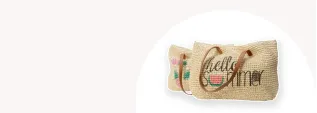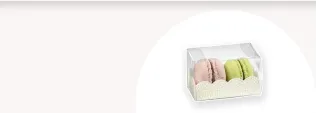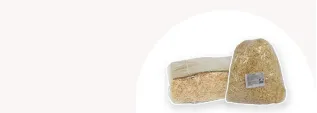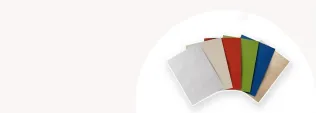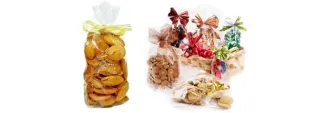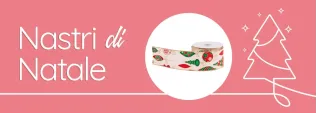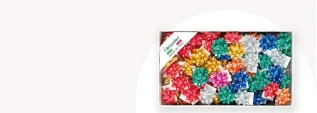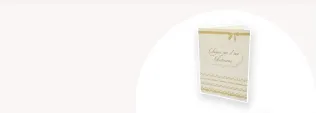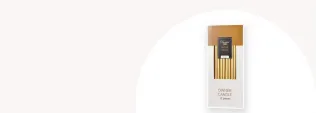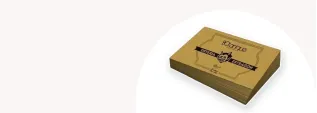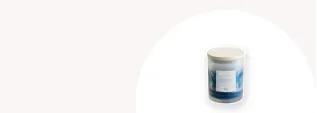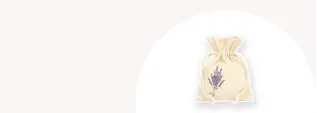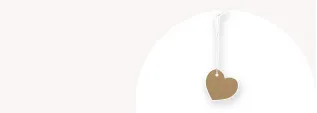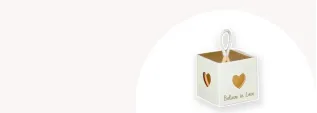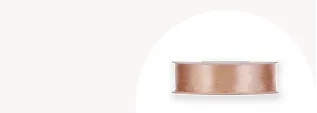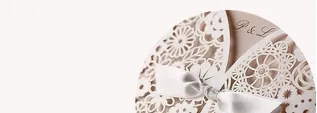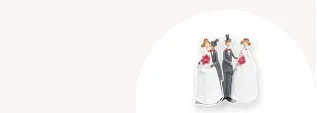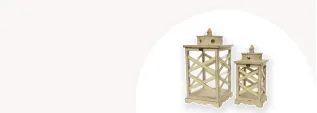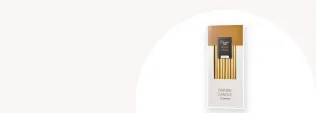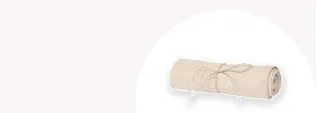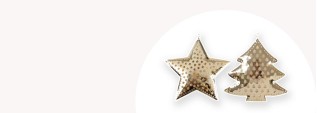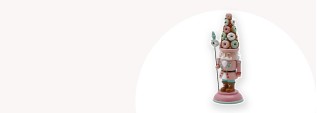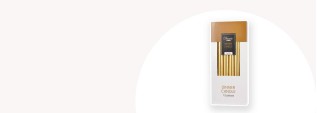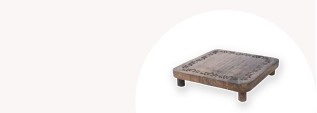Imagine opening a carefully wrapped gift box, embellished with a shiny ribbon that catches the light in a play of reflections. Even before discovering what it contains, you are already immersed in an experience of beauty, attention, wonder. That's what a decorative ribbon can do: add that unexpected touch that transforms a simple gesture into a unique and personal message.
From elegant bows for formal events to rustic ribbons for intimate occasions, every color, material and technique tells a story, adds a note of character. A ribbon can be the final signature of a brand, the detail that makes a package special, the thread that binds emotions and memories together. In this guide, we'll explore the world of decorative ribbons, discovering how a seemingly simple detail can elevate the ordinary and turn it into the extraordinary. Ready to be inspired?
1. Introduction to the World of Decorative Ribbons
Decorative ribbons are among the most versatile and popular elements in the world of packaging and decoration. Thanks to their variety of materials, colors, textures and sizes, they offer an infinite number of possibilities to personalize gifts, enrich decorations and give a unique touch to each creative project. From the simple bow on a gift box to the sophisticated composition of ribbons on floral decorations or centerpieces, ribbons can transform even the smallest details into real protagonists.
This guide will explore the world of decorative ribbons in all its facets, helping you understand how to choose the most suitable type of ribbon for each occasion, how to match it with the context and how to use it to express a brand identity or add personality to a gift box.
The Charm of Decorative Ribbons: Beyond Simple Aesthetics
While ribbons are often considered an aesthetic component, they actually have a much deeper impact. A carefully chosen ribbon can communicate attention, attention to detail and a sense of beauty that reflects the values of the person or brand that uses it. For example, a jute ribbon evokes a natural and rustic style, perfect for sustainable and green-related packaging, while a silk or satin ribbon evokes elegance and sophistication, ideal for special occasions such as weddings or formal events.
In gift boxes, the ribbon is not only a decorative element: it also represents the last touch that completes the gift, a small gesture that invites you to unwrap the package with curiosity and pleasure. Many brands also use decorative ribbons as part of their branding strategy, opting for colors, materials, and styles that echo their logo or corporate identity. This approach creates a customer experience that extends beyond the purchase, turning the opening of the package into a moment of surprise and appreciation.
A Brief History of Decorative Ribbons
The use of ribbons has deep roots in history. Since ancient times, ribbons have been used to adorn clothing and accessories. The Egyptians used thin, colorful fabrics to decorate robes and ornaments, while the Chinese and Japanese nobles used silk ribbons to embellish their clothes. In Europe, during the Renaissance, ribbons were prized as fashion accessories, so much so that royal courts sported luxurious ribbons made of precious materials such as silk and velvet.
Today, decorative ribbons are accessible to everyone and are used in multiple sectors: from packaging and floral design, to fashion and furniture. The ribbon industry has evolved to meet the needs of the modern market, offering sustainable solutions, innovative designs and an ever-expanding range of colours and materials.
Decorative Ribbons Today: Materials and Sustainability
In an increasingly environmentally conscious world, decorative ribbons are also experiencing an evolution towards sustainability. Today it is possible to choose tapes made with recycled, biodegradable or renewable materials, without having to sacrifice aesthetic quality. In fact, many manufacturers are introducing ribbons made of organic cotton, jute and other natural fibers to the market that offer an environmentally friendly alternative to traditional synthetic polyester tapes.
This new trend towards sustainability is transforming the tape market, causing many packaging companies to prefer eco-friendly tapes for their products. Choosing an eco-friendly ribbon not only improves the brand image but also communicates a message of attention and respect for the environment to customers, a value that is increasingly appreciated and shared.
Decorative Ribbon as an Expression of Creativity
The beauty of decorative ribbons is their ability to express creativity in a simple and immediate way. A colorful ribbon, a well-made bow or a touch of light thanks to a glitter ribbon can make a big difference in the final result of a package. Ribbons allow you to express your personality and, at the same time, adapt to any type of occasion and style: from elegant and formal to casual and rustic looks, up to the most imaginative and playful decorations for parties and birthdays.
In the next chapter, we will explore the main materials of decorative ribbons, discovering how each material affects the style, durability, and versatility of the ribbon, providing a broad overview for anyone looking to choose the perfect ribbon for any occasion.
2. Main Materials of Decorative Ribbons
Decorative ribbons are made from a wide variety of materials, each with unique characteristics that make it suitable for specific applications and styles. The choice of material is crucial to achieve the desired effect, as each type of tape has a different texture, shine and resistance. In addition, the material affects the sustainability of the tape and can be an important factor when choosing, especially for those who are environmentally conscious. Let's explore the main materials of decorative ribbons, analyzing the characteristics of each one and the situations in which they shine at their best.
2.1 Natural fabric tapes
Ribbons made of natural fabrics, such as cotton, linen and jute, are prized for their versatility and sustainability. These materials are perfect for those looking for a natural, rustic or vintage style, but they can also be adapted to more elegant contexts with the right combination of colors and accessories.
- Cotton: Cotton ribbons are soft, durable, and easily washable, making them ideal for packaging that needs a genuine and simple feel. Cotton lends itself well to dyeing and can be easily customized in a wide range of colors, making it versatile for any type of decoration. It is perfect for informal events, natural decorations and eco-friendly packaging.
- Linen: Linen is a sturdy fabric with a slightly rough texture that gives the ribbon a refined and natural look. Linen ribbons are ideal for a rustic yet sophisticated style and are often used for decorations in settings such as outdoor weddings or country parties. As a biodegradable material, linen is also an eco-friendly choice.
- Jute: Jute, commonly used for decorative ribbons, is a natural and very durable material that stands out for its rough texture. Jute ribbons are perfect for creating a rustic or vintage look, and they pair well with elements such as wood, kraft paper, and natural decorations. Being biodegradable, jute is very popular among those looking for ecological and sustainable solutions.
2.2 Silk and Satin Ribbons
Silk and satin ribbons are synonymous with elegance and luxury. Featuring a shiny and silky finish, these ribbons are often used for special occasions such as weddings, anniversaries, and formal events.
- Silk: Silk ribbons are highly prized for their softness and natural luster. Silk is a natural fiber that gives the ribbon a delicate and sophisticated look, ideal for high-quality gift packaging and classy decorations. Silk ribbons are often used for floral bouquets, luxury wedding favors, and elegant event decorations. However, as a delicate and expensive material, silk requires careful treatment.
- Satin: Satin is a synthetic material that mimics the sheen of silk, but it is cheaper and more durable. Satin ribbons are ideal for those looking for elegance at a lower cost. They are available in a wide range of colors and widths and are widely used for gift wrapping, wedding decorations and formal event setups. Satin is less delicate than silk, so it is a practical choice for decorations that require greater durability.
2.3 Organza and Tulle ribbons
Organza and tulle ribbons offer a light and transparent look, perfect for adding a delicate touch to any decoration. Their transparency allows you to create unique and refined visual effects.
- Organza: Organza is a lightweight, semi-transparent fabric that is often made from polyester or silk. Organza ribbons are ideal for adding a romantic and sophisticated touch to decorations. Their light texture and semi-transparent effect make organza perfect for floral decorations, wedding favors, gift wrapping and event setups. It is a durable material that holds its shape well, so it is ideal for creating bows and volumetric decorations.
- Tulle: Tulle is a thin mesh fabric that lends itself well to making fluffy and fluffy decorations. Tulle ribbons are particularly suitable for wedding arrangements, Christmas decorations and dress accessories. Thanks to its lightweight structure, tulle can be layered to create volumetric effects, giving an ethereal touch to the decorations. It is available in various colors and can be easily shaped to create shapes and swirls.
2.4 Polyester Tapes and Synthetic Materials
Tapes made of polyester and other synthetic materials are highly appreciated for their strength and the wide range of colors and styles available. These ribbons are perfect for long-lasting decorations and are suitable for various uses, from gifts to event setups.
- Polyester: Polyester tapes are cheap and long-lasting, available in a plethora of colors and designs. They are versatile and can be used for all kinds of decorations, from gift wrapping to Christmas decorations. Polyester is durable and holds its shape well, making it ideal for projects where the tape needs to last a long time or withstand weather conditions.
- Grosgrain: This particular type of polyester tape has a ribbed texture that gives it greater strength and rigidity. Grosgrain ribbons are perfect for making structured bows and decorations that require a stiffer ribbon. They are often used to close gift wraps, clothing decorations, and to create hair accessories.
- Vinyl and PVC: Vinyl and PVC tapes are waterproof and therefore suitable for outdoor decorations or contexts where the tape may come into contact with water. They are often used for seasonal outdoor decorations, such as Christmas lights, or for DIY projects where superior strength is required.
Sustainability of Materials in Decorative Ribbons
In recent years, many decorative ribbon manufacturers are responding to the growing demand for sustainable materials by introducing ribbons made from recycled, biodegradable, and eco-friendly materials. For example, it is increasingly common to find ribbons made of organic cotton, linen and jute that, in addition to being aesthetically pleasing, meet the criteria of environmental sustainability.
In addition, some synthetic tapes are made from recycled polyester, which is made from recycled plastic bottles. These materials make it possible to create tapes with high visual quality and at the same time reduce the environmental impact. Choosing sustainable ribbons is a decision that can enhance the image of the brand or project, as it demonstrates a commitment to the environment that modern consumers increasingly appreciate.
Knowing the main materials of decorative ribbons is essential to choose the right one for every need. Whether it's to bring elegance to a wedding with a silk ribbon or to create a rustic effect with jute, the choice of material plays a key role in the final result.
3. Ribbon Styles and Designs
Decorative ribbons not only differ in material but also in style and design, making them versatile and suitable for a variety of decorative and packaging projects. Choosing the right style is crucial to achieve the desired look, whether it's festive packaging, an elegant wedding favor, or an event decoration. In this chapter, we will explore the main styles of decorative ribbons, highlighting how each design can be leveraged to suit different occasions and atmospheres.
3.1 Classic Tapes
Classic ribbons are defined by simple lines and understated elegance. They usually feature solid colors and minimalist textures, without too many additional details, such as satin edges or matte finishes. These tapes are appreciated for their versatility and easily adapt to any style, from traditional to modern.
- Solid Color: Solid color ribbon is the most common and versatile, suitable for both formal and informal decorations. Choosing an appropriate color allows you to match the ribbon to the theme of the event or company branding. It is perfect for elegant gift packages and to give a tidy look to packaging.
- Satin Edges: Ribbons with satin edges add a touch of sophistication without being too flashy. This type is often used in formal contexts, such as weddings, anniversaries or corporate events. The satin finish on the edges gives a touch of brightness that enhances the package in a discreet way.
- Matte Finishes: Matte finish tapes are ideal for decorations that require an elegant yet understated look. The matte finish adds an element of softness and can help to create a sophisticated look. This type of tape goes well with materials such as kraft paper or minimalist design boxes.
3.2 Rustic Ribbons
Rustic ribbons are perfect for those looking for a natural and vintage style, especially popular for outdoor events, fall decorations, and DIY projects. These ribbons often use materials such as jute, raw cotton, or linen, and are characterized by textures and colors that recall nature.
- Jute: Jute ribbon is one of the most popular for rustic decorations. Its raw texture and natural color make it ideal for autumn decorations, for gift wraps with a natural look and for country or boho style weddings. Jute can also be combined with elements such as twine or raffia for an even more rustic effect.
- Raw Cotton: Raw cotton ribbons have a simple and natural look that is perfect for those who want an organic, unprocessed look. They are particularly popular for minimalist or Scandinavian-style decorations, and are often used in combination with kraft paper or other eco-friendly materials.
- Decorative Ribbons with Natural Patterns: Rustic ribbons can also feature small patterns that recall nature, such as leaves, flowers, or floral patterns. These details add a decorative touch while maintaining a simple and natural look, perfect for seasonal decorations or nature-inspired projects.
3.3 Modern tapes
Modern ribbons bring freshness and creativity to any decorative project. Featuring bright colors, innovative textures, and bold designs, they're perfect for those who want a contemporary and original look.
- Bright Colors: Brightly colored ribbons are perfect for festive events or adding a touch of energy to gift wrapping. These ribbons are ideal for birthday wrapping, corporate gifts, and event setups that require a burst of color. Paired with neutral or white paper, the bright colors create an eye-catching contrast.
- Metallic Textures: Ribbons with metallic finishes such as gold, silver, and copper add a touch of luxury and glamour. These ribbons reflect light in an appealing way and are often used for Christmas packaging, luxury gifts, and New Year's decorations. They can also be used to add a sophisticated detail to corporate gift wrapping.
- Glitter Ribbons: Glitter ribbons are ideal for festive events and for adding a sparkly touch to decorations. Perfect for birthday parties, Christmas, or other special occasions, these ribbons catch the light and create an eye-catching visual effect. However, it is advisable to use them in moderation to prevent the effect from being excessive.
3.4 Festive Tapes
Festive ribbons are designed to fit specific occasions and holidays. Thanks to their colors, patterns and decorative details, these ribbons immediately recall the atmosphere of the celebration, making festive moments more special.
- Christmas Ribbons: Christmas ribbons are often characterized by colors such as red, green, gold, and silver, and may feature decorations such as snowflakes, reindeer, or winter patterns. These ribbons are ideal for Christmas gift wrapping, Christmas tree decorations, and holiday-themed arrangements. In addition, many Christmas ribbons have glossy or glitter finishes to add a sparkly touch typical of the holidays.
- Easter Ribbons: For Easter, ribbons often feature pastel colors and patterns such as flowers, bunnies, or eggs. They are ideal for spring decorations, Easter baskets and holiday favors. Easter ribbons are also perfect for adding a cheerful touch to home decorations in spring.
- Ribbons for Birthdays and Celebrations: These ribbons can vary greatly based on the theme of the party, but they often include bright colors and playful designs, such as polka dots, stripes, or greeting messages. They are ideal for wrapping birthday gifts, decorating gift packages for graduation parties or birthdays, and adding a festive touch to any special occasion.
3.5 Seasonal-themed ribbons
Seasonal ribbons follow the color palettes and patterns typical of each season, offering a way to personalize gifts and decorations in tune with the time of year.
- Fall Ribbons: Characterized by warm shades such as orange, brown, and yellow, and often decorated with leaf or pumpkin patterns, fall ribbons are ideal for Halloween decorations, Thanksgiving, and rustic settings. They are also perfect for seasonal gift wrapping and decorating the home during the autumn months.
- Spring Ribbons: Spring ribbons usually feature pastel colors and floral patterns. They are ideal for Easter, spring decorations and gift boxes for baby showers or weddings. The freshness of the colors and designs recalls the rebirth of nature, making these ribbons perfect to celebrate the arrival of summer.
- Summer Ribbons: Summer ribbons often recall vibrant hues such as blue, turquoise, and yellow, and can include motifs of the sea, sun, or tropical flowers. Perfect for outdoor parties, summer birthdays, and beach event decorations, these ribbons bring with them an atmosphere of lightness and liveliness.
These different styles and designs of ribbons offer multiple creative possibilities, both for those who want a classic and refined look, and for those who prefer a more modern and festive approach. Choosing the right style can make a big difference in the end result of a decorative project or gift package, helping to create the perfect atmosphere for any occasion.
4. Techniques for Using Decorative Ribbons
Decorative ribbons offer endless possibilities for those who like to customize their projects and decorations. Thanks to a variety of techniques, it is possible to create complex bows, elaborate folds and compositions of great visual impact. Whether it's wrapping a gift or decorating a party, knowing the techniques of using ribbons allows you to add a touch of elegance and originality. Below, we explore some of the most popular techniques for using decorative ribbons in a creative and versatile way.
4.1 Classic Knot and Simple Bow
The classic knot and the simple bow are the most basic techniques, but also the most versatile. These techniques are easy to perform and only require a little practice to achieve elegant and uncluttered results.
- Classic Knot: The classic knot is simple yet effective, perfect for tying gift wrapping and decorations that require a minimalist approach. Simply wrap the tape around the package or item, tie a knot, and pull to secure it. This technique is ideal for plain or discreet ribbons, as it allows you to focus attention on the ribbon itself without adding too much detail.
- Simple Bow: The simple bow is a variation of the classic knot. Once you've tied the ribbon around the object, simply create two loops with the ribbon and tie them together as you would a regular shoe knot. This bow works well with medium-width ribbons, such as cotton or satin, and brings a touch of discreet elegance to any package.
4.2 Double-layer staple
The double-layered bow adds volume and sophistication to the decoration, creating a visually richer effect than the plain bow. It is an ideal technique for luxury gift packaging or for festive arrangements where a greater aesthetic impact is desired.
- How to Make It: To create a double-layered bow, start by cutting two pieces of ribbon, one slightly shorter than the other. Overlap the two ribbons and create two loops with each ribbon, crossing them to form a bow with more volume. This technique allows you to combine ribbons of different colors and materials, such as satin and organza, for a contrasting and sophisticated effect.
- Tips: This technique works especially well with satin, organza or velvet ribbons, materials that hold their shape well. For an even more dramatic effect, you can add a third layer of ribbon in a complementary color or a small decoration in the center, such as a pearl or an artificial flower.
4.3 Rosette technique
The rosette technique creates a flower-like effect, making it perfect for romantic and visually striking decorations. This technique is particularly suitable for decorating gift packages, centerpieces or even wedding favors.
- How to Make It: To make a rosette, start by rolling a ribbon around your fingers or a circular base, forming several layers. Once you have reached the desired size, remove the tape from the base and secure it in the center with a small piece of tape or a paper clip. At this point, you can slightly spread the layers of the ribbon to achieve a fuller, more voluminous floral effect.
- Ideal Materials: This technique works well with soft ribbons such as satin or organza, which can be easily shaped to create the floral effect. You can also experiment with different colors, using a darker ribbon at the base and a lighter one on top for a gradient effect.
4.4 Curl and Swirls
Gathering and swirling are fun and lively techniques that add a playful and decorative touch to the packaging. They are especially used for birthdays, parties, and other cheerful occasions.
- Curling: To curl a ribbon, simply use a pair of scissors. Hold one end of the tape firmly and slide the scissor blade along the tape with light pressure. This technique creates elegant and defined curls that can be used to decorate gift packages or for festive arrangements.
- Swirls: Swirls, or spiral curls, are made by wrapping the ribbon around a pen or stick, then heating it slightly with a hair dryer. When you remove the tape from the base, it will retain its spiral shape, creating a unique decorative effect. This technique is particularly suitable for polyester or vinyl tapes, materials that better maintain the curled shape.
4.5 French knot or Rosette knot
The French knot, also known as the rosette knot, is an elegant technique that creates an asymmetrical and refined bow. This knot is perfect for more sophisticated decorations and luxury gift wrapping.
- How to Make It: To make the French knot, take the ribbon and create a small loop, keeping the shiny side of the ribbon facing outwards. Hold the ring in place with one hand and wrap the tape around it, creating additional layers around the initial ring. Finally, pull the remaining ribbon to secure the knot in the center and adjust the loops to achieve the desired look.
- When to Use It: The French knot is perfect for decorations that require a touch of elegance and sophistication. It is ideal for silk or velvet ribbons and lends itself particularly well to wedding gifts, anniversaries and elegant Christmas decorations.
4.6 Fan Folding
Fanning is a creative technique that adds a three-dimensional dimension to decorations. It is perfect for packages that require a scenographic and volumetric effect.
- How to Make It: To create a fan fold, start by folding the tape back and forth, forming regular folds similar to those of a fan. Once the folds are complete, tie the ribbon in the center and open the ends to create a fan effect. This technique is ideal for wide and rigid ribbons, such as grosgrain or thick satin.
- Additional Tips: Fan folding is great for adding a movement effect to gift wraps. You can also use this type of decoration to decorate invitations or greeting cards, creating a unique and artistic presentation.
4.7 Butterfly knot
The butterfly knot is a simple yet elegant technique that gives the ribbons a shape similar to that of butterfly wings. It is an excellent choice for minimalist yet refined decorations.
- How to make it: To make the butterfly knot, tie a simple knot in the center of the ribbon and pull both ends to the sides to create two wider loops. Then, bend the ends of the rings slightly to obtain a shape similar to that of butterfly wings. This technique works well with light and flexible ribbons, such as tulle or organza.
- When to Use It: The butterfly knot is perfect for delicate decorations, such as wedding favors, floral decorations, and children's gifts. It can also be a nice detail to add a creative touch to floral decorations or for boho chic style arrangements.
These techniques of using decorative ribbons allow you to express creativity and personalize each package or decoration. Whether it's a simple knot or an elaborate rosette bow, each technique adds a touch of character and makes the project unique. Experimenting with different materials, colors and styles allows you to always obtain new and surprising results, making decorative ribbons a fundamental element for packaging and decoration.
5. How to Choose the Right Ribbon for Every Occasion
Choosing the right ribbon can make a big difference in the final result of a package or decoration. Each occasion, in fact, requires a specific style that matches the context and atmosphere of the event. From elegant celebrations to informal parties, selecting the right ribbon means considering factors such as material, color, and style to reflect the uniqueness of each moment. In this chapter, we'll look at the main types of occasions and provide tips on how to choose the perfect decorative ribbon for each.
5.1 For Corporate Gifts: Elegance and Discretion
Corporate gifts are a way to strengthen professional relationships and show appreciation for partners, customers or collaborators. In this context, it is important to opt for a sober and elegant style that communicates professionalism and respect.
- Recommended Materials: Satin or silk ribbons are excellent choices for an elegant and sophisticated look. Satin offers a refined shine without being overly flashy, while silk adds a touch of luxury.
- Recommended Colors: To maintain a formal image, it is advisable to choose neutral colors such as gray, navy blue, white, or black. If you want to add a touch of personality, you can consider using brand color, as long as it doesn't look too flashy.
- Recommended Style: A simple bow or classic knot is often the best choice for maintaining a professional and tidy look. For a distinctive touch, a small seal or company logo can be added, helping to create a personalized and recognizable packaging.
5.2 For Parties and Celebrations: Color and Vibrancy
For parties and celebrations, the goal is to create an atmosphere of joy and liveliness. The ribbons used for these occasions should be colorful and creative, reflecting the festive spirit of the event.
- Recommended Materials: Polyester and grosgrain ribbons are perfect for parties, as they are durable and available in a wide range of colors and patterns. For a lighter and more fun look, tulle and organza are also great choices.
- Recommended Colors: Bright colors such as red, yellow, green, blue or pastel colors for spring events and baby showers are perfect for adding a touch of cheer. For a specific theme, consider matching the colors with the theme of the party.
- Recommended Style: For informal and cheerful parties, you can use gathered ribbons, voluminous bows or the rosette technique. Decorations with scrolls or curled ribbons add a playful touch, making each package more interesting and festive.
5.3 For Weddings and Baptisms: Romance and Delicacy
Weddings and baptisms are special occasions that require elegance and delicacy. The ribbons used in these celebrations should express romance and sophistication, enhancing the romantic atmosphere of the event.
- Recommended Materials: Silk, satin, and organza are ideal materials for these occasions, as they offer a sophisticated sheen and a touch of softness. Organza, in particular, creates a transparent and light effect that goes well with floral decorations and romantic arrangements.
- Recommended Colors: Pastel colors such as powder pink, ivory white, lilac, and light blue are ideal for weddings and baptisms, evoking purity and sweetness. Metallic colors such as gold and silver can also be used to add a touch of luxury to decorations.
- Recommended Style: A double-layered bow or fan fold is ideal for an elegant and refined look. For a romantic touch, you can add small floral details or beads in the center of the bow, enhancing the theme of the event.
5.4 For Christmas Decorations: Festive and Sparkling Atmosphere
Christmas is the perfect time to use decorative ribbons in a creative and eye-catching way. Christmas decorations require ribbons that convey the warm and welcoming atmosphere of the holidays, with a touch of sparkle.
- Recommended Materials: Velvet, grosgrain and organza ribbons are perfect for Christmas decorations. Velvet gives a warm and rich look, while organza adds a sheer and light touch. For a bright look, glitter ribbons or ribbons with metallic finishes are perfect.
- Recommended Colors: Red, green, gold and silver are the Christmas colors par excellence. White and blue can also be used to create a winter and festive look, evoking snow and Christmas landscapes.
- Recommended Style: Voluminous bows and rosettes are perfect for Christmas decorations, adding a dramatic touch to any package or set-up. You can use the curl technique to create curly ribbons that give a playful touch to Christmas decorations, or use fan folding for a more elegant effect.
5.5 For Formal Events: Sobriety and Refinement
Formal events, such as gala dinners, anniversaries or corporate receptions, require a sober and refined style. Decorative ribbons should be carefully chosen to reflect the elegance of the occasion.
- Recommended Materials: Silk and satin are the preferred materials for formal events. Their sheen and softness give them a luxurious and sophisticated look, ideal for occasions where it is important to make an elegant impression.
- Recommended Colors: Neutral and classic colors such as white, black, gray, gold, and silver are perfect for formal events. Dark blue and burgundy can be great for adding a pop of color without coming across as flashy.
- Recommended Style: A rosette knot or a simple bow can add an elegant and discreet touch to any formal decoration. Avoid overly elaborate decorations, keeping a clean and tidy look to reflect the atmosphere of the event.
5.6 For Seasonal Decorations: Color Combinations and Themes
Seasonal decorations are an opportunity to use decorative ribbons creatively, following the colors and themes of the season. Whether it's fall, spring, summer, or winter, ribbons can help celebrate each season with a unique style.
- Recommended Materials: For seasonal decorations, cotton, jute and linen ribbons are great for creating a natural and authentic look. Glitter or metallic texture ribbons are perfect for the Christmas or winter season, while tulle and organza are ideal for spring and summer.
- Recommended colors:
- Autumn: Warm colours such as orange, brown, rust red and mustard yellow evoke the autumn atmosphere.
- Winter: Cool tones such as white, silver, blue and dark green recall cold and snow.
- Spring: Pastel colors such as pink, light green, lilac, and light blue are perfect for celebrating nature's rebirth.
- Summer: Bright colors such as turquoise, sunny yellow, emerald green and coral are ideal for a fresh and bright summer look.
- Recommended Style: The fan folding technique or the double-layered bow are great for adding volume and movement to seasonal decorations. Swirls and curled ribbons are perfect for summer and spring decorations, while voluminous bows and rosettes are ideal for winter and Christmas.
Choosing the right ribbon for each occasion allows you to tailor the look and style to the theme of the event, ensuring that every detail is in harmony with the atmosphere of the celebration. From holiday seasons to weddings, the right decorative ribbon adds a finishing touch that can make every moment special.
6. The Role of Decorative Ribbons in Branding
In an increasingly competitive market, details make the difference, and decorative ribbons are one of these fundamental details. In addition to being an aesthetic element, ribbons can play a key role in strengthening a brand's visual identity. A carefully chosen ribbon, in colors, materials and styles that reflect the corporate image, can transform a simple package into a powerful branding experience. In this chapter, we will explore how decorative ribbons can help build perceived brand value, communicate the company's message, and improve the customer experience.
6.1 Packaging Customization: A Detail That Speaks to the Brand
Packaging customization has become an essential strategy to stand out in the market. In a context where customers are increasingly looking for a unique experience, a personalized decorative ribbon can transform an anonymous product into an object that reflects the values and philosophy of the brand.
- Company Logo Ribbons: Many brands opt for ribbons printed with their logo or slogan. This choice creates an immediate visual link with the brand, making the package recognizable and memorable. Logo ribbons are especially common in the luxury and e-commerce industry, as they help to make the unboxing experience unique.
- Brand Colour Choice: Colours are powerful branding tools and convey subconscious messages to consumers. For example, blue is associated with trust and security, while green evokes sustainability and naturalness. Choosing ribbons that reflect the corporate colors reinforces the brand identity and creates visual consistency between packaging and product.
- Materials and Style in Line with the Brand: The material of the ribbon plays an important role in communicating the company's values. A sustainability-oriented brand might choose organic cotton or jute ribbons, while a luxury brand might opt for silk or velvet ribbons. Even the style – whether rustic, modern or minimalist – helps to represent the brand image in a coherent way.
6.2 Creating a Memorable Customer Experience with Decorative Tape
Customer experience is a crucial aspect of branding, and decorative tape can help create memorable and positive moments for the customer. A well-kept packaging, which includes a carefully chosen decorative ribbon, shows the customer that the company cares about retail and that it values the purchase.
- Surprise and Curiosity Effect: A well-placed ribbon, such as a bow or rosette, entices the customer to unwrap the package with curiosity and expectation. This simple detail adds a layer of excitement and anticipation, making opening the package a special moment. The unboxing experience can thus become memorable and push the customer to share the moment on social media, contributing to brand visibility.
- Personalizzati messages: Some brands add a personalized touch to the ribbons, such as small printed messages or matching tags, to express gratitude or to tell the story of the brand. This level of personalization can be particularly effective for niche brands or for companies that focus on the human relationship with the customer, strengthening the bond between brand and consumer.
- Consistency and Professionalism: When the packaging is taken care of and the chosen ribbon reflects the identity of the brand, the overall image that the customer receives is one of professionalism and attention to detail. This increases the customer's trust in the brand and makes them more likely to remember the company and return to it for future purchases.
6.3 Sustainability and Eco-Friendly Choices
In the current context, sustainability is an increasingly important value for consumers, and many brands are adopting eco-friendly solutions for their packaging, including decorative ribbons. The choice of eco-friendly ribbons not only contributes to the reduction of environmental impact, but also conveys to the customer the message of a responsible and planet-friendly brand.
- Ribbons in Natural Materials: Many brands are opting for ribbons made of biodegradable materials such as cotton, jute and linen. These tapes are often untreated or colored with natural dyes, which further reduces the environmental impact. Choosing eco-friendly ribbons is an effective way to communicate sustainable values and strengthen the brand's green positioning.
- Recycled and Recyclable Tapes: Polyester tapes can also be sustainable when made from recycled materials, such as recycled PET bottles. Ribbons made from recycled materials are visually indistinguishable from those made from virgin polyester, but they convey a positive message to customers, inviting them to make more informed choices.
- Packaging and Compostable Tapes: Some brands are starting to use fully compostable tapes, which decompose without leaving toxic residues. This is an innovative and still uncommon choice, but one that certainly attracts the attention of environmentally conscious consumers, who appreciate the brand's transparency and ecological commitment.
6.4 Increased Brand Recognition
Packaging, including decorative tape, plays a key role in building brand recognition. A customer who easily recognizes the brand is more inclined to remember it and choose it again for future purchases.
- Iconic Design: Many brands develop iconic and recognizable designs for their ribbons, using specific patterns or textures that become synonymous with the brand. For example, classic ribbons with repeated logos or distinctive patterns create a unique visual identity that the customer immediately associates with the brand.
- Consistency in Detail: Using personalizzati tapes on each package or product creates a visual consistency that reinforces brand presence. This attention to detail, repeated in every package, means that the customer quickly associates these elements with the brand, even without needing to see the full logo.
- Telling the story of the brand: A decorative ribbon can also become a narrative element that helps tell the story of the brand. For example, a craft brand may choose raw cotton ribbons to recall the natural and genuine character of their products, while a luxury brand may use silk or velvet to emphasize quality and exclusivity.
6.5 Social Attraction: When Packaging Becomes Shareable
Today, packaging has also become an increasingly important element in social media, where many customers share photos of their purchases. Well-designed packaging, which includes carefully chosen decorative ribbons, can become a strong point for the brand on social media, increasing visibility and reaching new potential customers.
- Instagrammable effect: A quality decorative ribbon, paired with stylish packaging, can turn the entire packaging into something "Instagrammable". Customers love to share photos of their well-packaged purchases on social media, and a nice decorative ribbon can make all the difference, making the package photogenic and eye-catching.
- Unboxing Experience: The unboxing experience has become a real trend on social media, and decorative ribbons play a key role in this experience. Unboxing videos showing curated packaging attract attention and increase interest in the brand, as they offer a preview of the care and quality that the company dedicates to its products.
- Community engagement: Some brands incentivize customers to share their unboxing experiences through dedicated hashtags. This allows you to create a community around the brand, where customers can share their images and stories, helping to spread the brand image through digital word of mouth.
Decorative ribbons are much more than just an aesthetic element: they are a powerful tool for building and strengthening a brand identity, conveying values and engaging customers. By choosing the right materials, colors, and styles, a brand can create packaging
7. Creative Ideas with Decorative Ribbons
Decorative ribbons are extremely versatile and can be used in a variety of ways to create unique decorations, personalize objects, and transform simple items into real works of art. From fancy dinner place cards to DIY projects, ribbons offer limitless possibilities for creative expression. In this chapter, we'll explore some creative ideas for using decorative ribbons to add a personal and refined touch to any occasion.
7.1 Place Cards and Favors: Small Decorations for Special Events
For occasions such as weddings, baptisms and elegant dinners, decorative ribbons can be used to create beautiful place cards and personalized favors. These small details enrich the setting of the event, giving guests a tangible memory of the occasion.
- Personalizzati placeholders: Ribbons can be used to create personalizzati placeholders to place on tables. For example, a satin ribbon with a small card bearing the guest's name tied around a napkin or glass can add a touch of elegance and order to the table. For an even more special effect, choose a ribbon that matches the color theme of the event and add a small decoration, such as a leaf, pearl or artificial flower.
- Refined Favors: Wedding favors become even more precious when decorated with ribbons. Whether it's tulle bags, boxes or small gift items, a beautiful ribbon bow can transform a simple wedding favor into an elegant keepsake. Ribbons in materials such as silk, satin or organza add a refined touch and can be enriched with pendants or tags personalizzati with the name of the bride and groom or the date of the event.
7.2 Centerpieces and Garlands: Decorating the Home with Style
Decorative ribbons can become a key element to create centerpieces and garlands that enrich the home or event with a touch of color and style. They are perfect for festive occasions, seasonal decorations, and DIY projects.
- Elegant Centerpieces: Ribbons can be used to make centerpieces that attract attention. For example, you can tie a wide ribbon around a vase or candle holder, creating a simple bow or decorated with a brooch or floral decoration. This small touch makes the centerpiece more elegant and can be easily adapted to the theme of the event by choosing specific colors and materials.
- Personalized Wreaths: To decorate doors and walls during the holidays, wreaths are a classic choice that can be enhanced with decorative ribbons. For a Christmas wreath, you can use red, green or gold velvet ribbons. For a spring wreath, on the other hand, you can choose ribbons in pastel colors or with floral motifs. The ribbons can be tied in the shape of bows around the garland or dropped freely to create a cascading effect.
7.3 DIY Projects: Ideas for Reusing Decorative Ribbons
For those who love DIY, decorative ribbons offer virtually limitless possibilities to create personalizzati objects and reuse materials in creative ways. Here are some ideas for turning leftover ribbons into original and fun DIY projects.
- Bracelets and Accessories: Ribbons can be easily made into bracelets, headbands, or hair accessories. A simple grosgrain or satin ribbon can be knotted around the wrist or head, perhaps enriched with beads or pendants for a more elegant effect. This is a perfect project for those who want to create accessories personalizzati for themselves or as a gift.
- Personalizzati Bookmarks: Smart ribbons can be used to create simple yet elegant bookmarks. Simply fold the ribbon in half, insert a pearl or pendant at the ends and secure it with a knot. This DIY bookmark is a great gift idea for those who love to read, and can be personalized by choosing ribbons in different colors and materials.
- Wall Decorations with Ribbons: Ribbons can be used to create original wall decorations, such as decorative curtains or collages. Simply cut the ribbons into different lengths and hang them on a stick or frame, creating a colorful composition that you can hang on your wall. This decoration is perfect for children's rooms, birthday parties or boho-themed events.
7.4 Creative Gift Packaging: Making Every Package a Work of Art
Packaging is an art, and decorative ribbons are essential tools for creating unique and personalized gift wrapping. Even a simple gift can become special if it is carefully packaged and with the creative use of ribbons.
- Voluminous and Layered Bows: For a striking effect, you can create bulky and layered bows using multiple ribbons of different colors and materials. For example, you can pair a satin ribbon with an organza ribbon, layering them to create a bow with more dimension and depth. This technique is perfect for birthday or Christmas gift wrapping, when you want to impress with special packaging.
- Cascading Effect with Curled Ribbon: If you're wrapping a gift for a baby or a festive occasion, you can use the gathering technique to create a cascading effect with ribbons. Curl the tape with scissors and attach it to the package, allowing it to fall naturally on the sides of the package. This adds a playful and lively touch to the packaging.
- Decorations with Natural Elements: A decorative ribbon can be enriched with natural elements such as twigs, leaves, dried flowers or pine cones, for rustic or eco-friendly style packaging. For example, tie a small sprig of rosemary or a dried flower with a jute or cotton ribbon around the gift box. This little touch adds personality and makes the package unique and original.
7.5 Holiday Creations: Christmas and Easter Decoration Ideas
The holidays offer numerous opportunities to use decorative ribbons in a creative and festive way. Whether it's Christmas, Easter, or Halloween, ribbons can be used to beautify your home and create themed decorations.
- Christmas Tree Decorations: Ribbons are one of the most versatile Christmas tree decorations. You can wrap them around the tree like a garland, create bows to place between the branches, or use them to hang balls and decorations. For an elegant look, choose velvet or silk ribbons, while for a sparkling effect, opt for glitter or metallic ribbons.
- Easter Egg Decorations: Ribbons can also be used to decorate Easter eggs, especially chocolate eggs or those emptied for decoration. You can wrap a colored ribbon around the egg and secure it with a small bow, or use ribbons in pastel colors for a springy, delicate look. These decorations are also perfect for enriching Easter baskets.
- Garlands and bows for Halloween: Even during Halloween, ribbons can be used creatively. Choose ribbons in black, orange, and purple and use them to create bows, garlands, and decorations to hang on your door or use to decorate your home. For an even more special touch, you can combine the ribbons with details such as fake cobwebs or small bats.
7.6 Creative Ideas for Everyday Use of Decorative Ribbons
Even in everyday life, decorative ribbons can be used to embellish everyday objects or to give new life to decorative elements in the home.
- Decorated Flower Vases: A simple flower vase can become an elegant piece of furniture by adding a decorative ribbon around the edge. You can use ribbons made of natural materials such as jute or cotton for a rustic look, or choose satin ribbons for a more refined effect.
- Pillows and Decorated Sheets: Ribbons can be sewn or glued onto pillows, sheets, and other fabrics to create decorative patterns or borders. This technique is perfect for adding personalizzati details to household linen and can also be used to embellish bags or fabric accessories.
- Personalizzati Organizer : Ribbons can be used to decorate boxes, drawers, and organizers, adding a touch of color and style to your home organization. Simply attach the tape to the edge of boxes or drawers, creating a tidy, coordinated look that makes spaces more pleasing to the eye.
Decorative ribbons are therefore much more than just an accessory: they are a versatile and creative element that can be used to transform ordinary objects into unique and personalizzati decorative details. Thanks to their versatility, they offer endless possibilities for customization and can make any occasion special, from holidays to everyday decorations.
8. Maintenance and Storage of Decorative Ribbons
Decorative ribbons, if properly stored and maintained, can be reused and keep their beauty intact over time. The care of ribbons is not only about the aesthetic aspect but also about the quality of the material, especially when using fine ribbons such as silk, satin or velvet. In this chapter, we'll explore best practices for storing decorative ribbons and some tips for keeping them in top condition, ensuring that they're always ready to use and look fresh and tidy.
8.1 How to Store Tapes: Avoiding Creases, Stains, and Discoloration
Proper storage of decorative ribbons is essential to avoid creases, stains, and discoloration, which can affect their appearance and quality. By following a few simple steps, you can protect your tapes from damage and keep them in pristine condition.
- Store Rolled Tapes: To prevent the tapes from bending or forming unsightly creases, it is advisable to roll them gently. After use, roll the ribbons onto a spool or bobbin to maintain the shape and be sure to secure the end with a small rubber band or clip, without overtightening to avoid leaving marks.
- Avoid Exposure to Direct Sunlight: Direct sunlight can discolor tapes, especially those made of delicate materials or intense colors. To prevent ribbons from losing their shine and discoloring, store them in a dark place or in closed boxes. Artificial lighting that is too bright can also accelerate the discoloration process, so it is preferable to store the tapes in a drawer or closed box.
- Protect from Dust and Moisture: Dust and moisture can compromise the quality of ribbons, especially those made of delicate materials such as silk and velvet. To protect the tapes from dust, you can store them in airtight containers or in storage bags.









